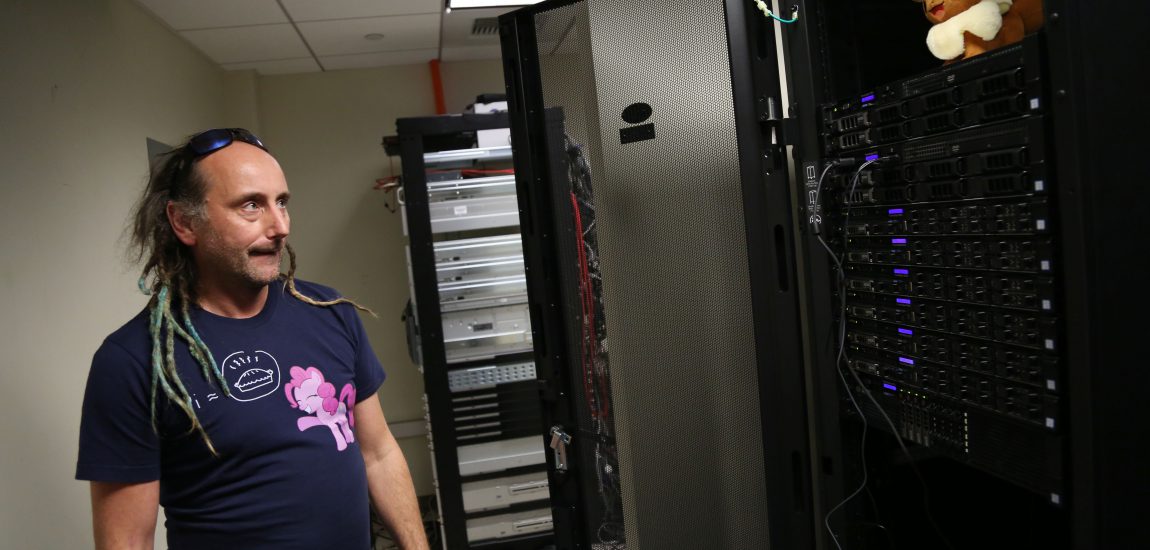
Six Questions to Andy Ridgwell
Dr. Andy Ridgwell (University of California, Riverside) writes computer models – numerical representations of the primary interactions of climate with atmospheric CO2, including the cycling of carbon, oxygen, and nutrients between land, ocean, and marine sediments. He applies these models to diverse questions, ranging from geological episodes of extreme glaciation and warming, and global-scale ocean anoxia, through understanding global biogeochemical cycling in the modern Earth system, to quantifying future marine impacts of fossil fuel CO2 emissions and the effectiveness (or otherwise) of geoengineering. His current interests revolve around simulating the co-evolution of marine plankton and their environment, and their ecological sensitivities to past climate perturbations and global environmental catastrophe. He never sets foot in the lab.
1. What or who inspired you to become a geochemist?
Assuming that you can even call me a card-carrying ‘geochemist’ ;)
My inspirations go back to James Lovelock and Andrew Watson (the latter being my PhD thesis advisor) and the concept of ‘planetary homeostasis’, which was originally framed in terms of physical climate and surface albedo (in fact, ‘Daisy World’ was my very first computer program/model). However, the primary importance of greenhouse gases in climate regulation quickly leads you down the rabbit hole of aqueous carbonate chemistry, trace metal speciation and cycles, isotope systems and … worse … In summary: understanding what makes the system ‘tick’ in its messy totality inspired me.
2. How do you think the field has changed since you were a student?
In a sense it was easier to build a model of the Earth system when we understood only the very basics of marine biogeochemical cycling (co-limitation of marine productivity by dissolved iron was a ‘new’ thing at the time). It was also possible to have read *all* of the relevant literature! Conversely, you had to try much harder to devise meaningful process representations in models, be creative in making use of sparse data, and somehow pull the numerical rabbit out of the hat of no data whatsoever.
3. Which career choices were the most important?
Given that my first degree steered off in an unfortunate solid state (mineral) physics direction; taking a Masters degree (Environmental Science, University of Nottingham, UK) was critical to reorient my qualifications. This proved to be a great tour through … (trying to cast my mind back to the mid-1990s – a time even before COVID) … air and water pollution and geochemistry, plant physiology and soil structure, and of particular use: numerical methods and programming (although I had previously spent time whilst unemployed, teaching myself to code).
4. What has been your greatest obstacle?
Non-parallelized computer code? I guess you mean … e.g. finding myself stuck with a poor grade in a less-than irrelevant first degree (see above).
5. What inspires or motivates you?
Cats and elegant computer code?
I guess you mean … understanding how the Earth system ‘works’. I attempt this through constructing with computer models and develop learning and insights – treating them as games and ‘playing’ – exploring scenarios, testing sensitivity to parameters or perturbations, asking ‘what if’ questions of the model. Even doing real work (specific scenarios associated with specific questions) sometimes. These days I find myself particularly driven by questions surrounding biological evolution and extinctions and what the dynamical relationship is between geochemical and ecological changes on Earth through geological time.
I am also inspired by people who have worked hard to create numerical codes and tools for the community and have been so open and generous with their time in providing and supporting these tools (David Archer, and his sediment diagenesis models was an important influence early on; and e.g. the work of Reiner Schlitzer – Ocean Data View has become a foundational tool in marine geochemistry, although for my sins, I prefer to hack things myself in MATLAB).
6. What qualities do you look for in a potential PhD student?
Motivation, independence, numerical and programming skills, and a deep appreciation of how superior cats are to dogs. I see my role as facilitating and encouraging scientific exploration rather than prescribing specific directions and steps.
Interview conducted by the EAG Communications Committee
